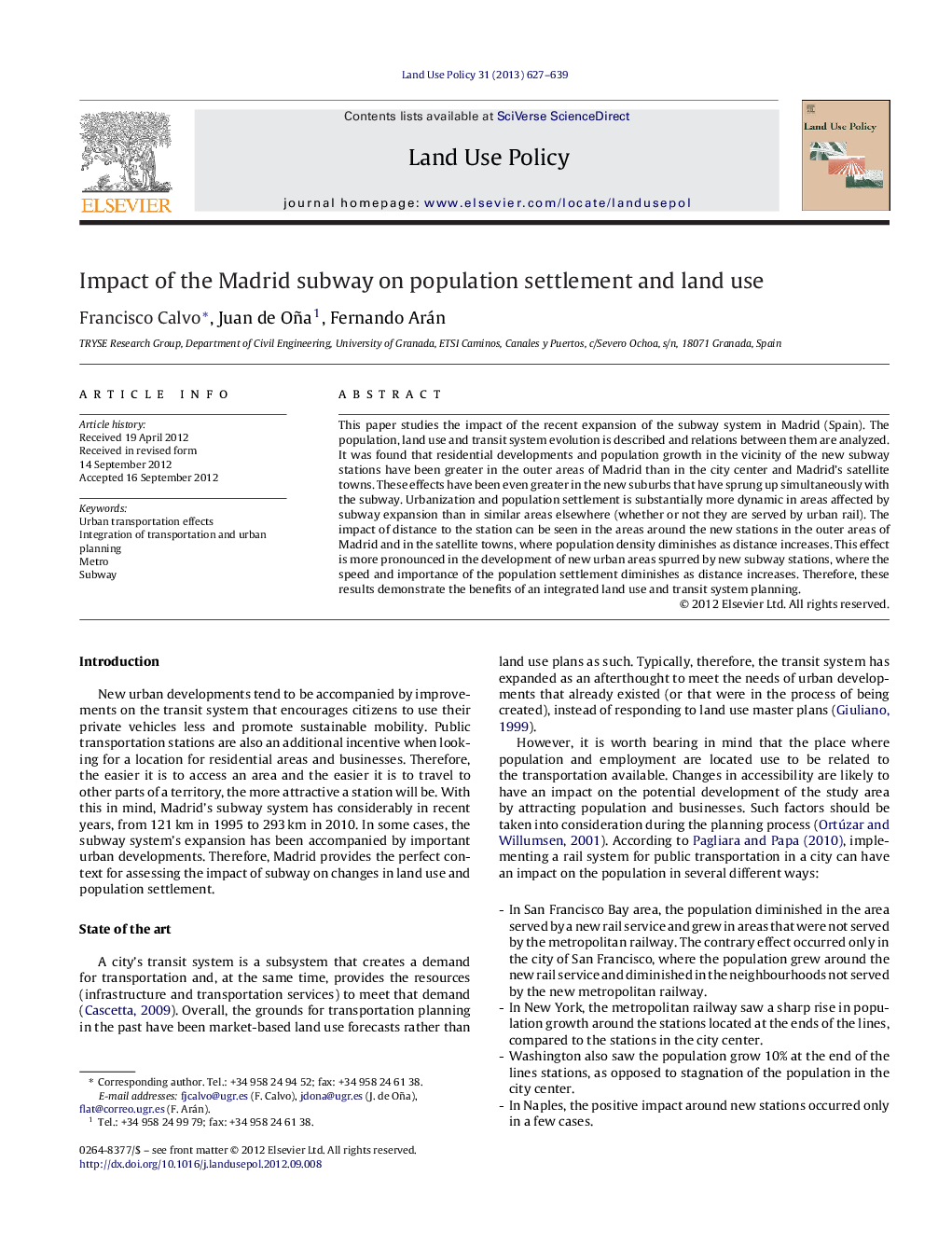| کد مقاله | کد نشریه | سال انتشار | مقاله انگلیسی | نسخه تمام متن |
|---|---|---|---|---|
| 93119 | 160112 | 2013 | 13 صفحه PDF | دانلود رایگان |
This paper studies the impact of the recent expansion of the subway system in Madrid (Spain). The population, land use and transit system evolution is described and relations between them are analyzed. It was found that residential developments and population growth in the vicinity of the new subway stations have been greater in the outer areas of Madrid than in the city center and Madrid's satellite towns. These effects have been even greater in the new suburbs that have sprung up simultaneously with the subway. Urbanization and population settlement is substantially more dynamic in areas affected by subway expansion than in similar areas elsewhere (whether or not they are served by urban rail). The impact of distance to the station can be seen in the areas around the new stations in the outer areas of Madrid and in the satellite towns, where population density diminishes as distance increases. This effect is more pronounced in the development of new urban areas spurred by new subway stations, where the speed and importance of the population settlement diminishes as distance increases. Therefore, these results demonstrate the benefits of an integrated land use and transit system planning.
► Impact on population settlement around new subway stations greater in the outer areas of Madrid.
► Effects even greater in new suburbs that have sprung up simultaneously with the new stations.
► Population settlement more dynamic in areas affected by subway expansion than in similar areas elsewhere (whether or not served by urban rail).
► Speed and importance of population settlement diminishes as distance to the new stations increases.
► Results obtained demonstrate the benefits of an integrated land use and transit system planning.
Journal: Land Use Policy - Volume 31, March 2013, Pages 627–639
